The Road to Freedom: Early African American Quilting
The strong tradition of African American quilting has existed ever since the dawn of America. Quilts from this period are bound into horrific acts of slavery, a reminder of the terrors that shaped the past and left ripples of trauma throughout history. But they also speak of courage and determination under fire, of people who refused to be silenced and found innovative and endlessly creative ways of telling personal histories, experiences, and private messages while carving out a new identity as African Americans. Contemporary artist and quiltmaker Faith Ringgold points out just how vitally important quilts became, not just for warmth and comfort, but as a marker of individuality when so much had been stripped away, observing, “(Quilting) was a way of them being able to continue their art in a way that was acceptable to the slavers because it was keeping them warm.”
Little evidence has survived from the textiles of early America, particularly that made by slave communities. But historical accounts tell how slave women were expected to work long hours producing fabric, clothing, and bedding for their owners through spinning, weaving, and sewing. Because they were given little to sleep on themselves other than scraps and sacks, slaves had to make their own bedding to keep warm. Working with whatever limited fabric resources were available including old clothing, food sacks and rags given to them or discarded by plantation owners, African women made comfortable bedding for themselves and their families, a practice that would gradually evolve from necessity into artistic expression.
Forced away from their homes, possessions and families, slaves had to forge a new history from the most limited means. Quilting was one way to keep the visual culture and textile traditions of their native Africa alive and to weave it into the fabric of their daily lives. The African tradition of making large, distinctive, and eye-catching patterns in bright colours to distinguish one’s kin group from another as seen from a distance was one trope that carried over into African American quilting. Kuba textiles in geometric panels decorated with embroidery and cowrie shells were a strong influence, while the colourful patterns of Kente and Bogolanfini textiles were recreated in cut out pieces of fabric.
Diamond motifs were an African symbol for the stages of life, with the points representing birth, life, death and rebirth – these shapes later evolved into the renowned African American tradition for the ‘Pine Cone’ or ‘Pine Burr’ motif. Pattern breaks were often incorporated into African designs because they were believed to ward off evil spirits who followed linear paths, or to mark the natural shifts of life experiences, while mixed patterns were a symbol of status, with more patterns signalling greater social rank.
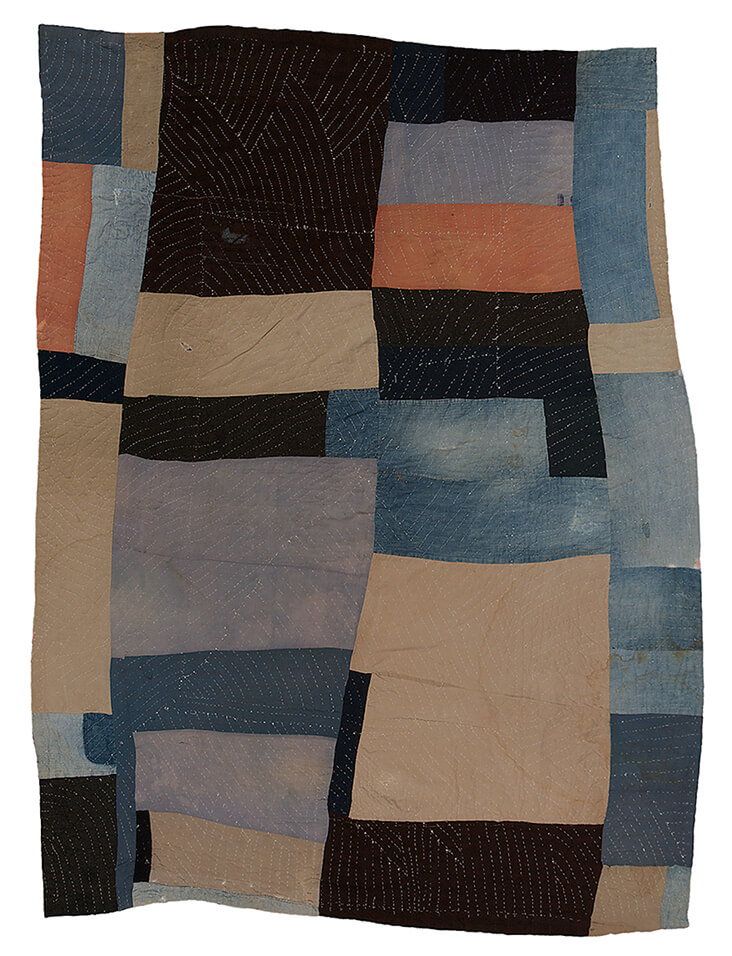
Blocks and Stripes Work-Clothes Quilt / Lucy Mooney (born 1880) / 1935 / Cotton, denim, and wool. Photo courtesy of Souls Grown Deep. © 2018
Though African textiles had been traditionally practiced by men, in African American communities it was predominantly women who adopted quilting, turning it into a powerful form of folk art which was passed from one generation to the next. Popular illustrative and symbolic motifs appearing in their designs were Sawtooth, Drunkard’s Path, Bear’s Paw, Railroad Crossing, Tree of Paradise, Ocean Wave, Feathered Star, Log Cabin and Nine Patch. “String quilts” were an innovation that brought tiny scraps of fabric together into larger panels to be sewn into a quilt.
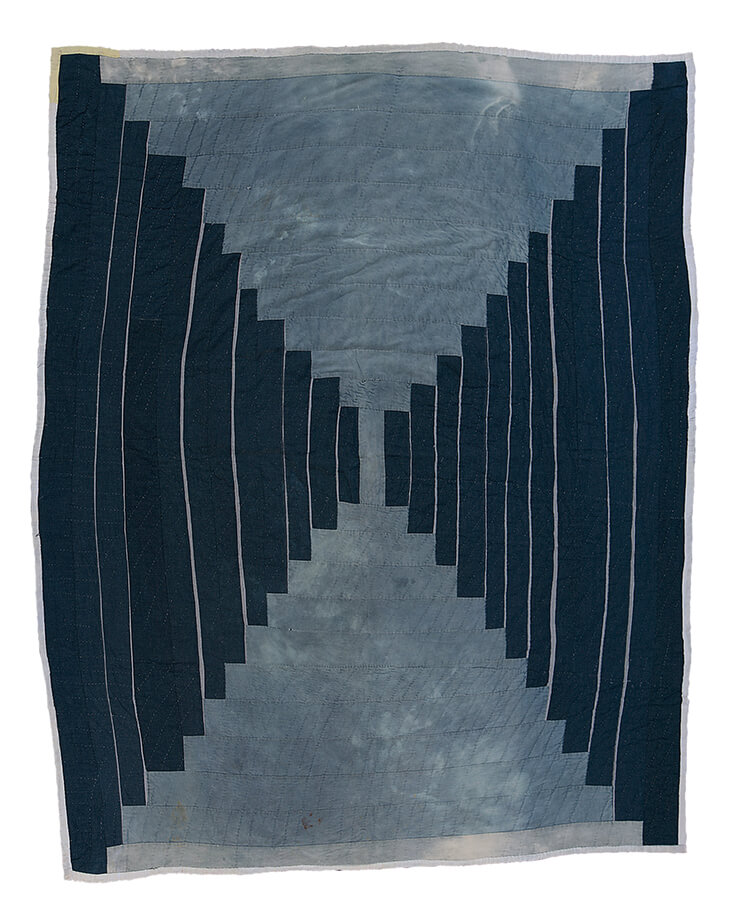
Log Cabin, Courthouse Steps Quilt (Local Name: Bricklayer) / Single-Block Variation / Loretta Pettway / 1970. Photo courtesy of Souls Grown Deep. © 2018
African patterns and designs became deeply integrated into new America through both the importation of slaves and their traditional African textiles. American Quilt collector Eli Leon even credits patchwork to the history of African textiles, observing, “The patchwork quilt emerged simultaneously in England and the United States, in households of aristocracy at a period of time when there were African slaves in those households. Since scraps of cloth were becoming more and more available after 1750 with the process of industrialisation, it seems likely to me that the English and Americans got the idea of using them decoratively from their slaves.”
Makers rarely signed their work, meaning it is often hard for historians to distinguish who made specific quilts of the time. Because white mistresses would also gift quilts made by their African slaves to friends and families little or no credit was given to the exquisite skill, tradition, and craft of the original African American makers. Quilts were often made by large groups of women, who could be all African American or include white women amongst them, further complicating the records of history. But in African American slave communities quilting bees were one of the few social occasions that were sanctioned by owners, lending the act of making quilts a quality of emancipation and expressive freedom.
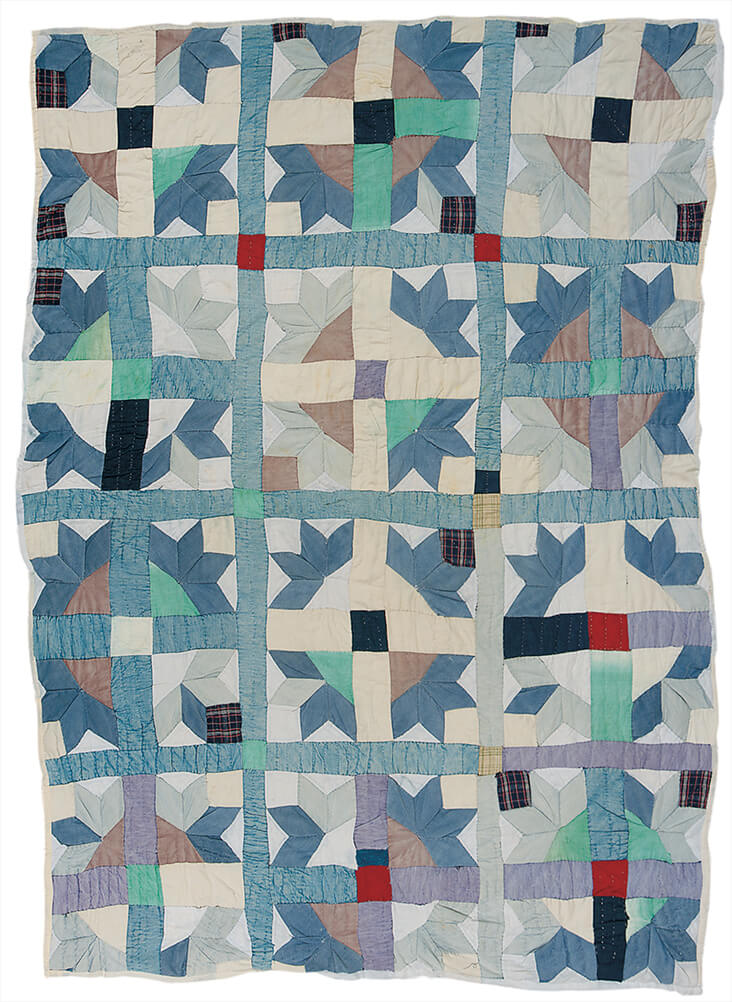
Doves Of The Window Quilt / Creola Bennett Pettway / 1955. Photo courtesy of Souls Grown Deep. © 2018
Several publications suggest quilts played a vital role during the Underground Railroad before and during the American Civil War, including Gladys Marie Fry’s Stitched from the Soul (1989) and Tobin and Dobard’s Hidden in Plain View (1999). Both writers argue quilts with recognised symbols including the ‘Bear’s Paw’, and the ‘Cabin’ were deliberately hung in strategic locations to show fleeing slaves which way to run or where to hide on the perilous path to freedom. While little evidence exists to prove if these accounts are actually true, they are a fascinating insight into the past, revealing just how vitally important the coded language of quilting had become across American culture.





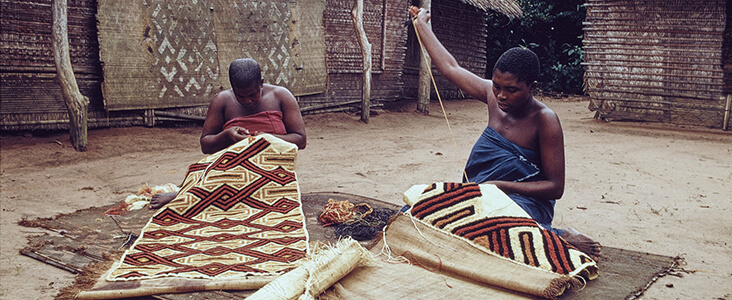
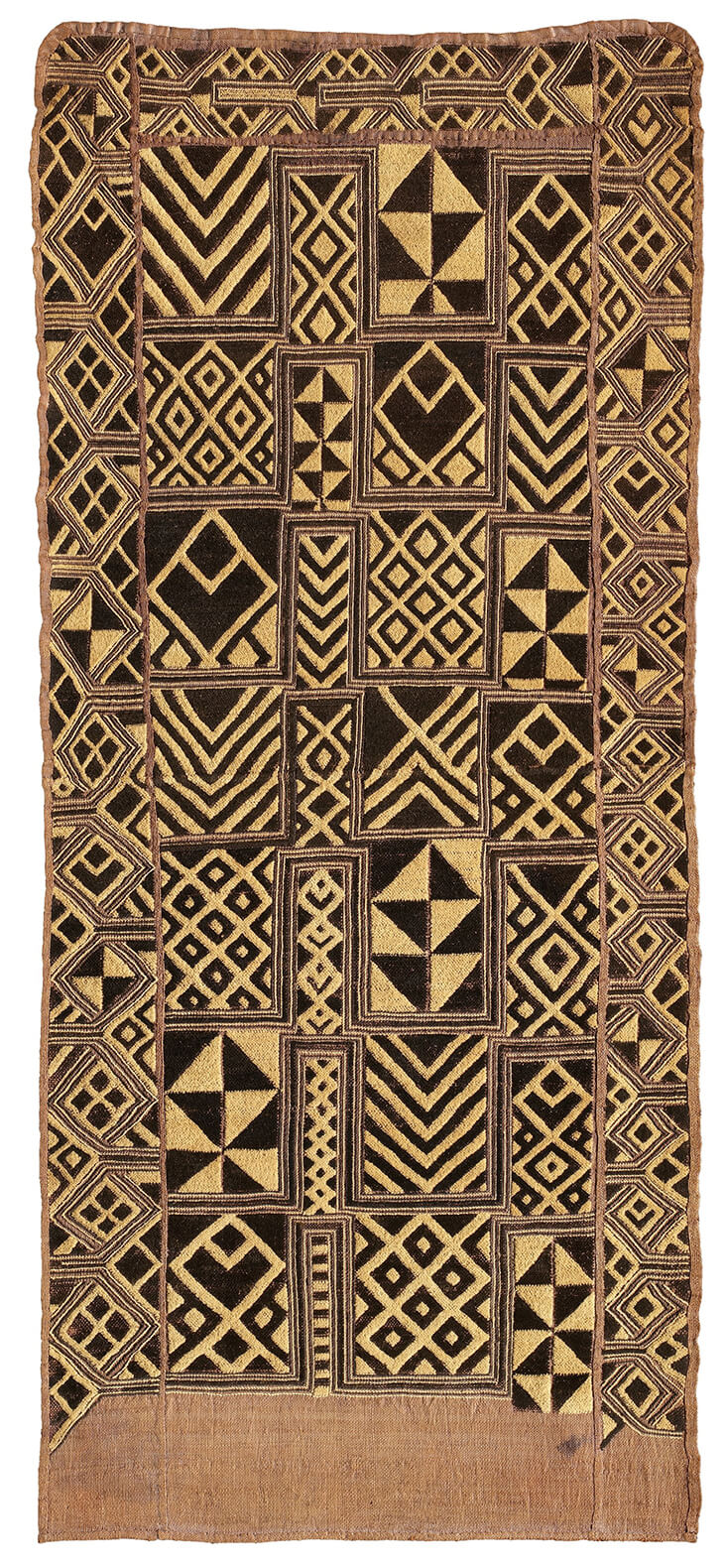
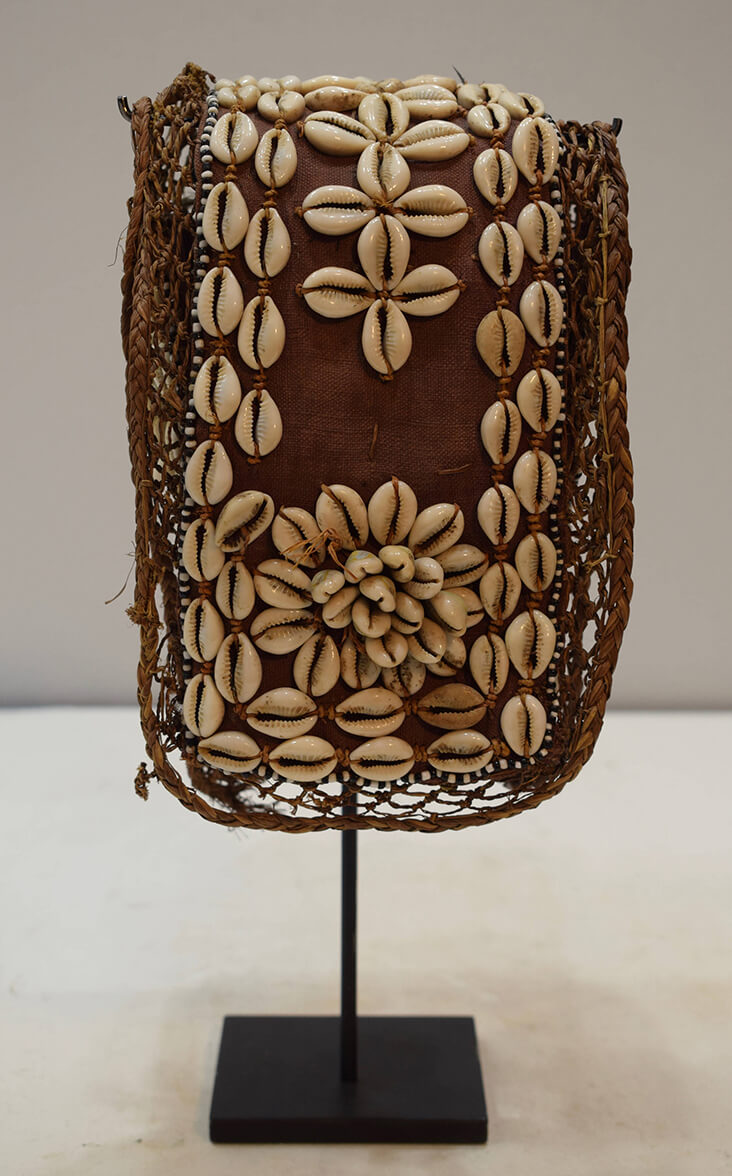















































8 Comments
Tarius Mcathur
This was a lovely piece on African American quilt and quiltmakers. Thanks Fabric Store for so many informative articles. As an African American quilt artist myself (third generation), it’s nice to hear a bit of history and to see some amazing quilts, some new to me some I’ve studied before but it’s been so long so it was nice to have a reminder.
Please keep up the great work of bringing all sorts of news about fiber arts. It’s an art media that is not nearly as prized as it should be. As a long time customer, you certainly won’t be losing my business by offering informative articles on a RANGE of interesting topics!
Patricia Martin
Dear Ms. Gorczyca: I’m sure the Fabrics-Store will keep its customers quite happy with everything it offers, including educational essays. The fact that you find people “doing social justice stuff” unfortunate is in itself very unfortunate. Your response was hateful, and uncalled-for. Virtue-signaling? Perhaps. But in today’s world, the more virtue we see, the better. Obviously you are privileged and have never had to make anything out of other peoples’ cast-offs. You must be terribly lonely way up there in your ivory tower. But, as a favor to us all, please stay there. And shut your mouth.
Teresa Wescott
Social justice lecture? Obviously Ms Lesso struck a nerve with her interesting article on the art of quilting! By the way ladies quilts are made of fabric and this is the fabric store web site! All relevant details. Don’t read if you don’t want to but don’t call this article something it’s not, a social justice lecture. Get over yourselves! If you can’t say something nice say nothing especially when you don’t know what you’re talking about.
It’s very sad that you feel so privileged that you don’t even know or care about social justice, since you can’t recognize it.
Diana Byykkonen
Thank you for this interesting article. I always enjoy learning about cultures and the different textiles created for necessities and art.
Margaret Marcy emerson
Thank you for this article and the beautiful images that accompanied it. Some I was familiar with, others were fresh to my eyes. It is impressive that the human spirit, even when oppressed, finds a way to express creativity and beauty. How hopeful.
Carrie Krumrie
The author has started a review of literature of an art form that totally originated in the United States! The article explained how people brought to this country worked to provide the family with curtains, table linens, bedding, and clothing for everyone! How these woman used what was available to make something of value from scraps!
These women took the raw products available to weave fabric as well as make useful fabric products for the people!
Have you tried to set up a loom to weave fabric? Have you taken to raw wool to process into yarn to knit sweaters?
These skills were important to the people living on the property. That means the family of the owner and the slaves!
I am sorry that you took this article to be a social justice lecture!
Carrie Krumrie
Elena Gorczyca
Dear Fabric-store,
I certainly didn’t appreciate this absolutely unnecessary virtue-signaling item showing up in my mailbox.
The word ‘linen’ didn’t appear even once in this post.
Instead, I was given yet another old and tired social justice lecture. Please.
Focus on linen, Fabric-store, especially if you want to keep your customers.
There is enough people out there doing social justice stuff, unfortunately.
Poo Pee
Hi Elena,
We think that your stance on this matter is not very respectful, and that it would better to keep an open mind. We stumbled across this article during our research on a lovely novel by Alice Walker called “The Color Purple”, do you know it? We think this article was a perfect representation of the rich culture of African American quilting, and recommend that you not only read Walker’s novel, but that you also reread this article with a different mindset.